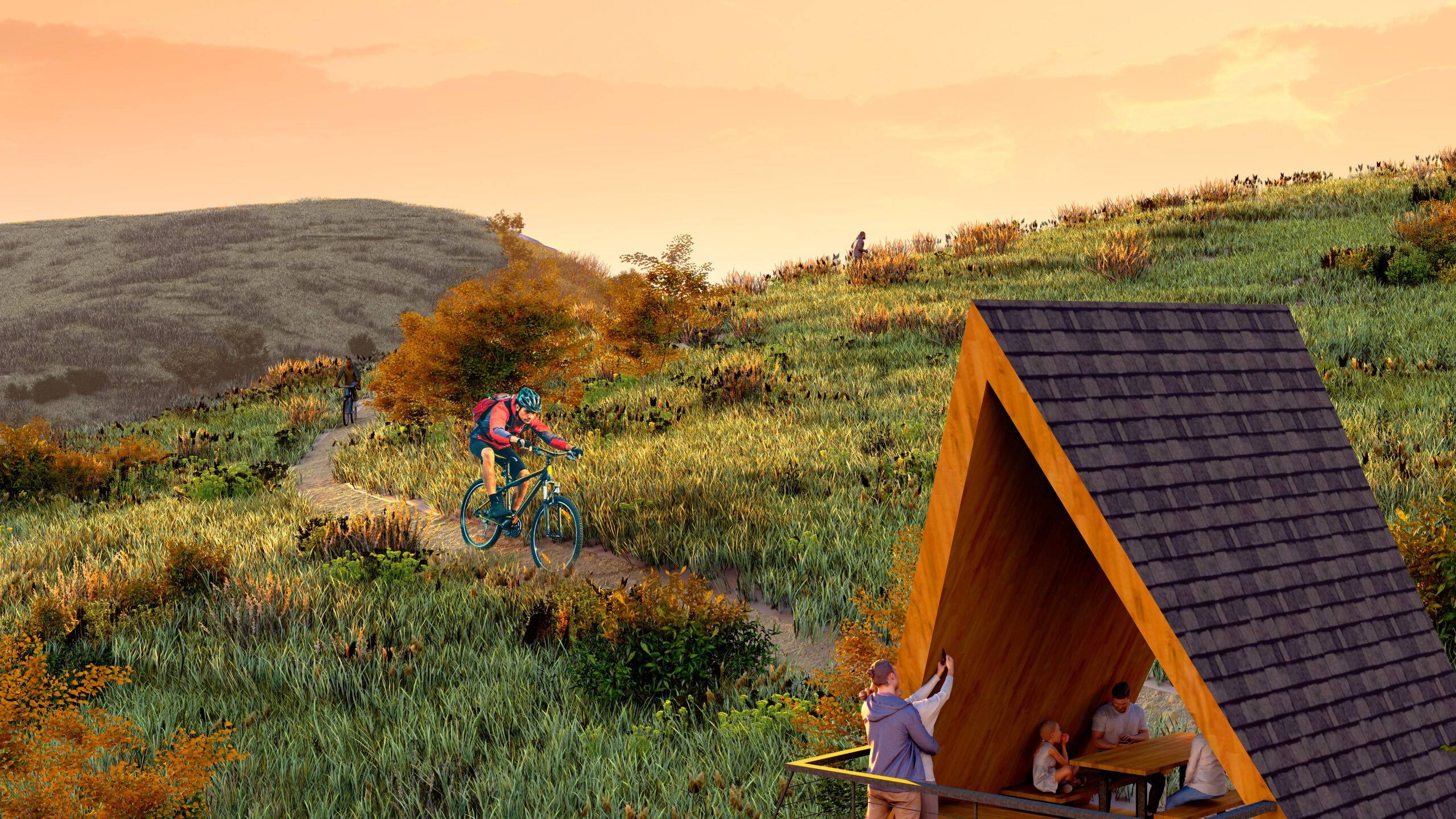There’s a lot of talk about localscape here at Terraine, and no shortage of questions about what that means, exactly. We’re glad to explain. Partly because it’s a subject that’s close to our hearts, but also because it’s an important part of the Terraine community and the way we’re focused on making sustainable choices. In the case of landscaping decisions, we’re going local. According to our friends at the Jordan Valley Water Conservancy District, a localscape is designed to “embrace concepts that enhance the natural environment rather than imposing outdated and unsustainable landscape practices.” We’re all in.
What’s up with the water?
Ever considered where Utah gets its water? You might be surprised to learn that nearly 95% of the state’s water comes from snowpack run-off. The total amount (in terms of something like gallons) is a relative figure, given temperature variability over winter months which can impact how much precipitation falls, and whether it falls as snow or rain. In any case, what’s even more surprising is that the amount of water that makes it to the area’s homes and businesses is less than 1% of the total. And then once it gets there—get this—nearly 2/3 of that amount is used for irrigation. All that lovely landscaping is thirsty, and it takes a toll.
Water, water, everywhere.
Consider this: a family of four doing things like washing clothes, taking showers, rinsing produce, and flushing toilets will typically use somewhere in the neighborhood of 235 gallons of water a day. Compare that to an average daily yard-watering, which can require 3,000 gallons. That’s over 12 times the amount of water needed outdoors compared to indoors. It’s time for a change.
Enter Utah’s localscape.
Short for “local landscape,” the term localscape puts the need for more efficient water use front and center. And this waterwise approach has been created especially for Utahns living in a state where weather, climate, precipitation rates, and culture can really impact the bottom line, hydrologically speaking.
Localscape doesn’t mean don’t landscape—it means landscape wisely. There’s guidance that helps homeowners see that a localscape can be beautiful and reflect individual style, too. The best part is that localscapes can cut that 3,000 gallons to 1,000 gallons. Depending on the plants, that reduction can be even greater. It’s a huge difference when you consider the savings over time. It’s important, too: with a growing population, where we’re projected to see a 50% increase over the next 40 years, we can expect a similar increase in water demand. The upside is that there’s no shortage of creativity when it comes to localscapes. And because they rely on native and adapted plants, flowers, shrubs, and trees, yards are made to thrive in the local zones where they’re planted.
Americans have traditionally been lawn-lovers. These traditional lawns, like Kentucky Bluegrass, require a great deal of supplemental water in this climate. When we use lawn alternatives that don’t require as much water, the surplus goes instead toward our drinking water supply. It also helps increase the state’s water storage—a critical measure that ensures supply in the case of a future shortage.
Terraine is committed to stewardship.
Those friends of ours at the Jordan Valley Water Conservancy District have been instrumental in helping our team develop native and naturalized landscapes that are as smart and waterwise as they are beautiful. Our community here, in the shadow of the Oquirrh Mountains, is part of the Great Basin sagebrush ecosystem—a vast space where an enormously varied collection of flora (and fauna) is intertwined. This region has been called, “the sagebrush sea,” and the prairie grassland landscape that both surrounds us and weaves between the homes here is an essential piece of the identity of our community. We look to this remarkable habitat as our design inspiration.
The localscape legacy.
The Terraine community is committed to doing all we can to be good stewards of this place, protecting the health of the landscape and promoting the enhancement—and growth—of this special ecosystem. Working with specialists, we’ve established a plant palette that features drought-tolerant native plants, and what we like to call “well-behaved” adaptive species. All of these friendly characters can do without the water that other thirsty species require, and the whole setting creates the kind of pollinator’s paradise that native birds and insects find quite inviting. The people around here like it, too. And we hope that those that come after us will appreciate what we’re all doing to preserve, enhance and protect these beautiful lands.




